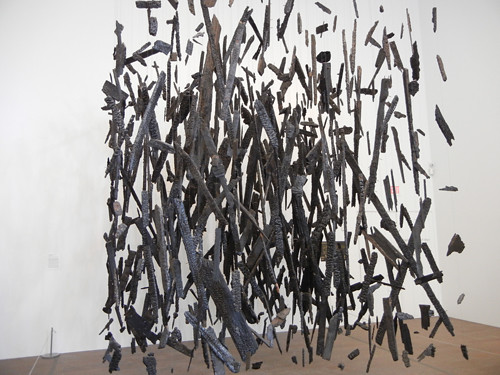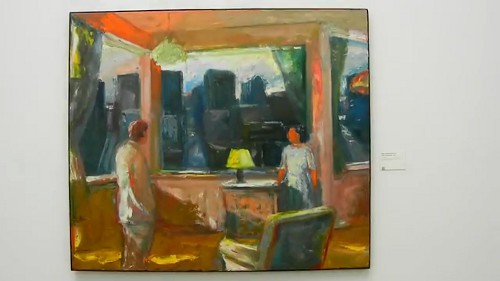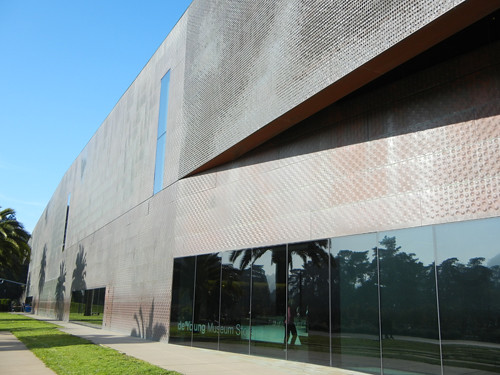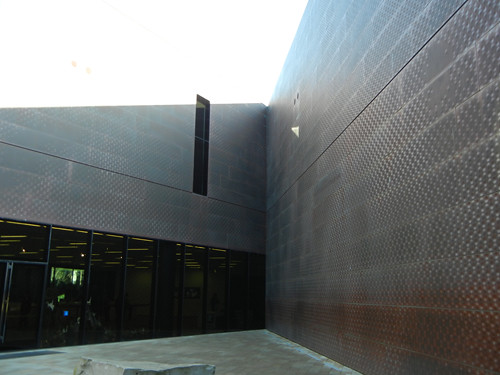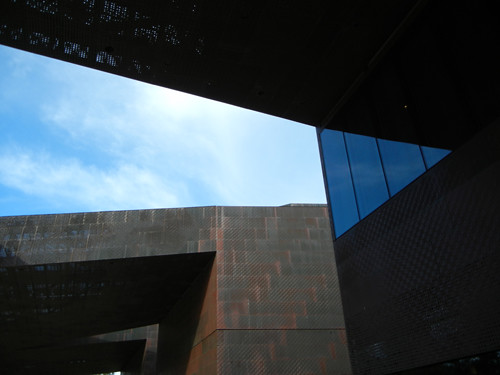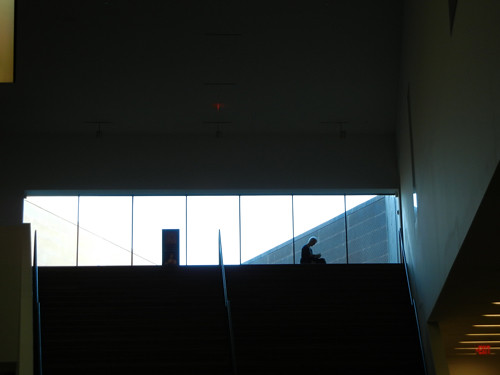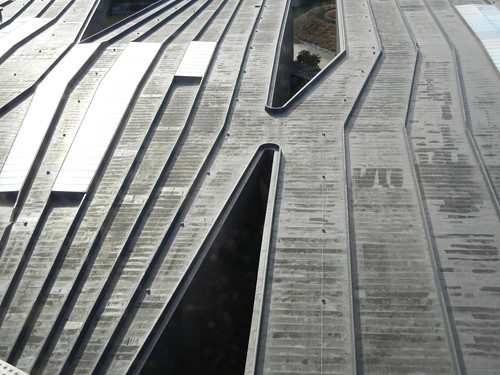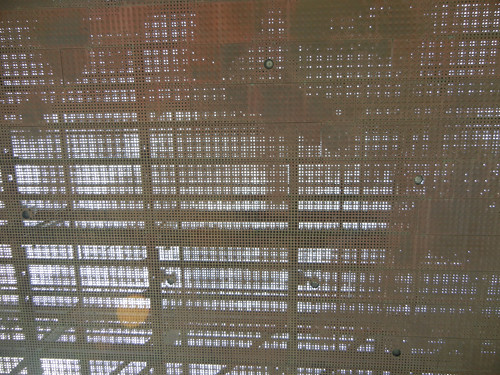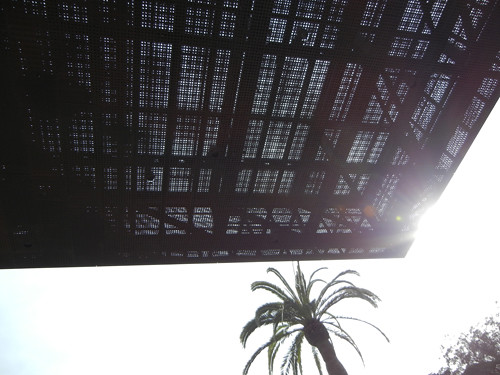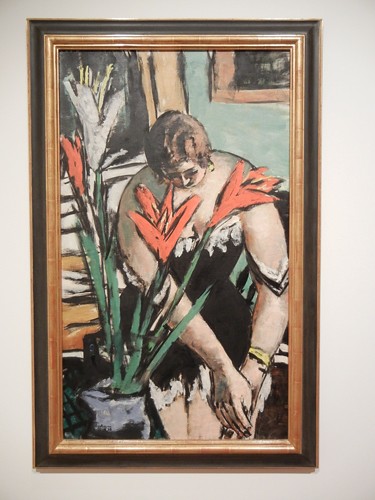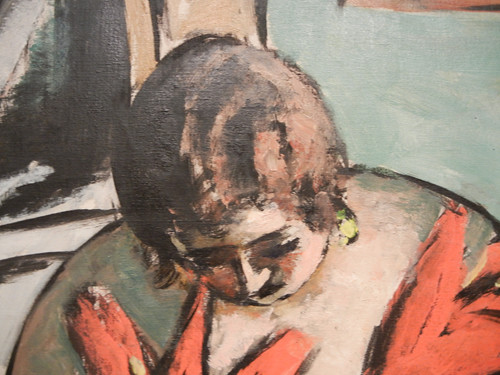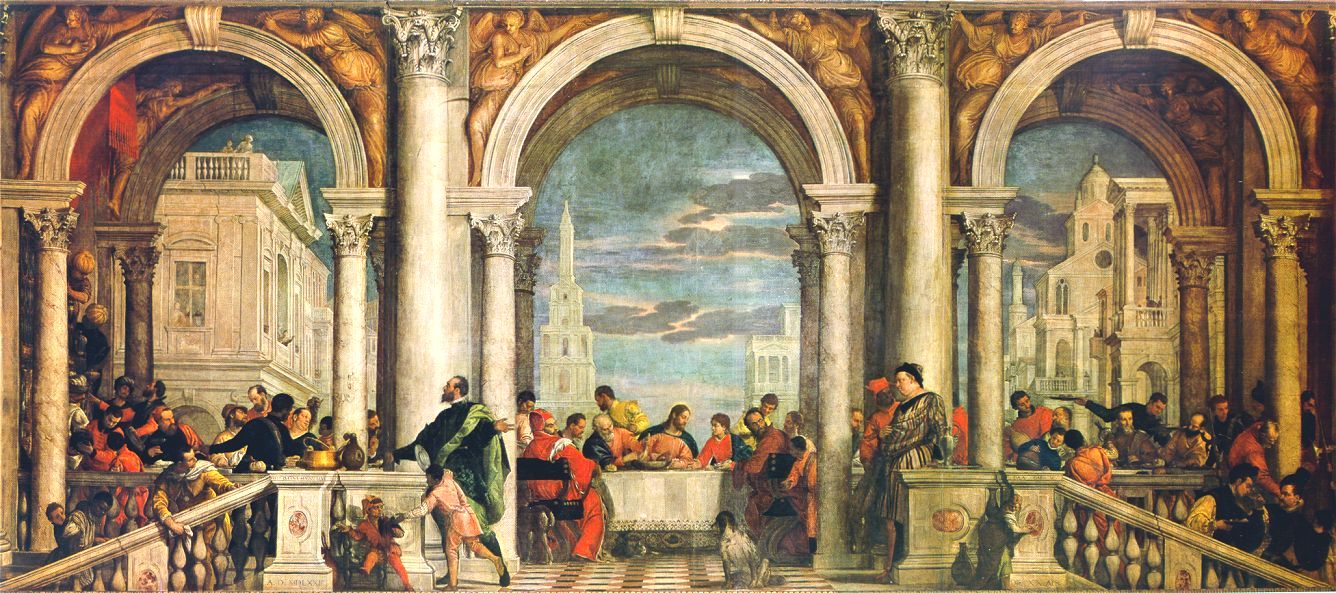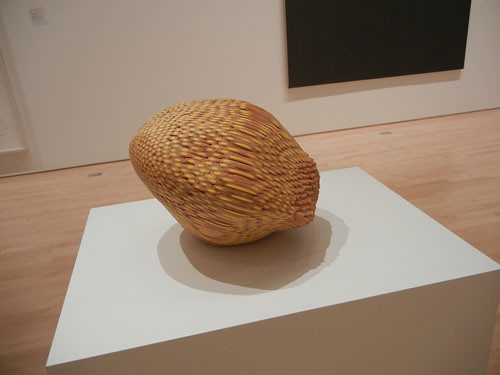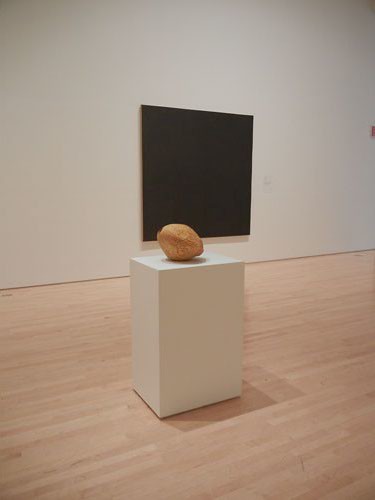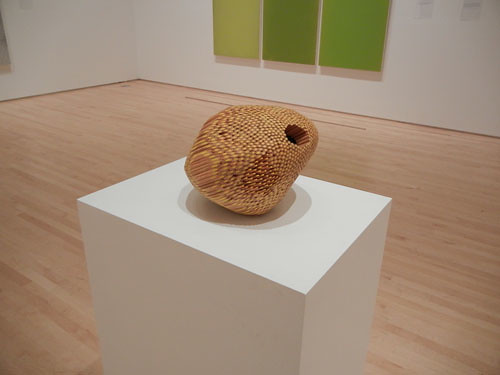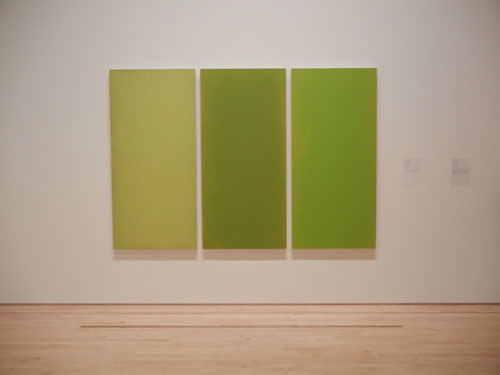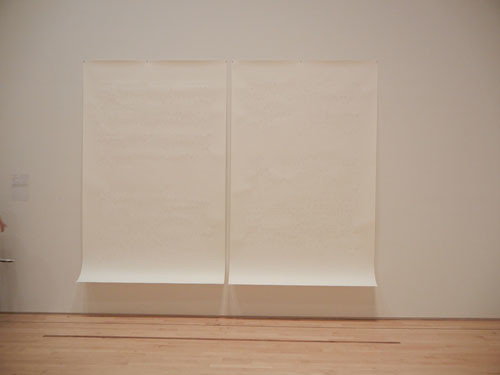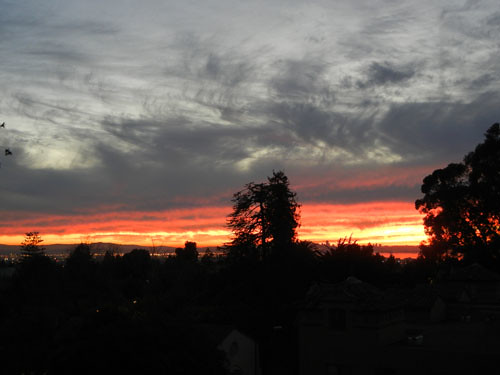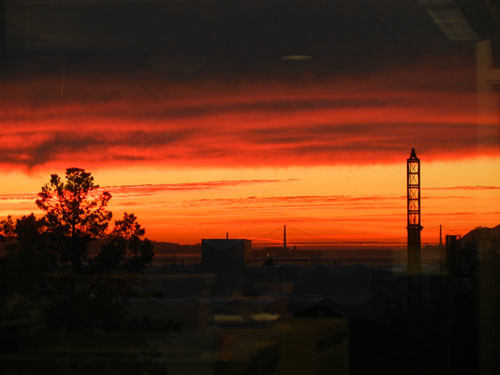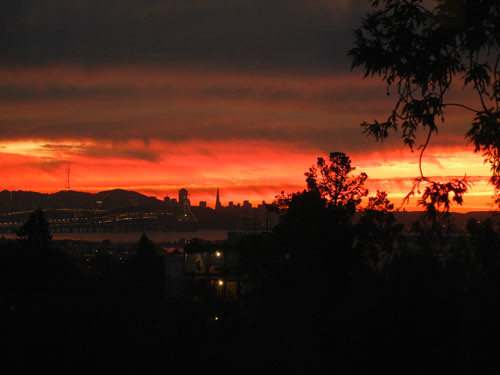Met, the most prestigious in the U.S., naturally has more collections I like than I can remember, put amongst its many glories, I pick the two paintings below.
The first one is a triptych - I hope this doesn't mean that I'm cheating - Beginning, 1949, by German painter Max Beckmann:

Beginning
Max Beckmann (German, Leipzig 1884–1950 New York City)
Date: 1949 Medium: Oil on canvas
Dimensions: 69 x 125 1/2 in. (175.3 x 318.8 cm) 67 1/2 x 36 x 3 1/2 in. (171.5 x 91.4 x 8.9 cm) (Frame, 67.187.53a left panel) 71 1/2 x 61 1/2 x 3 1/2 in. (181.6 x 156.2 x 8.9 cm) (Frame, 67.187.53b center panel) 67 1/2 x 36 x 3 1/2 in. (171.5 x 91.4 x 8.9 cm) (Frame, 67.187.53c right panel)
Beckmann is one of the very few artists I not only love, but draw inspiration greedily and incessantly. I am very partial to the pessimistic and apocalyptic Germanic sensitivity. I love Beckmann's insistence of staring down the deepest pit of human miseries and more importantly, the sources of them, while not dismiss a flicker of hope for the humanity. More important, he was able to create paintings with real depth and gravity with incredible beauty and appropriate one.
A survivor of medical services during World War I, "he saw his world as a tragedy of man's inhumanity to man and saw life as a carnival of human folly. His work remained intense and allegorical throughout his life.
The theme that connects the three panels of "Beginning," the most autobiographical of Beckmann's ten triptychs, is a childhood dream. The central panel shows a playroom where a little boy in military costume brandishes a sword as he mightily rides a rocking horse. His Puss 'n Boots doll hangs upside down behind him, presumably slayed by his weapon. The noise he makes has alarmed his parents (seen at the left near the ladder), who have climbed up to inspect his attic kingdom. More prominently placed is the figure of a redheaded woman who reclines seductively, blowing blue bubbles from a pipe. Squeezed between the boy and his fantasy is an old grandmother reading a newspaper. To the left and right, on separate panels, Beckmann painted other memories from his childhood — a hurdy-gurdy grinder and a classroom with teacher and students." [metmuseum.org]
My second favorite, another painting, is a portrait of Erasmus of Rotterdam by Hans Holbein the Younger:

Erasmus of Rotterdam
Hans Holbein the Younger (German, Augsburg 1497/98–1543 London)
Date: 1528–32 Medium: Oil on linden panel
Dimensions: 7 1/4 x 5 9/16 in. (18.4 x 14.2 cm); painted surface 6 15/16 x 5 1/2 in. (17.6 x 14 cm)
I love this painting, first by the beautiful colors Holbein employed. I'm always partial to the green-tinted blues. His portrait of this great scholar and humanist, was somber, serious yet open. The face of Erasmus was wise and like an opened-book, invited people to benefit from the light it emitted. His features were sharp in the alerted sense, not in a preying mood. His gaze knowing yet humble, and full of consternation and mediation. A wise sage indeed. The brilliantly painted fur trimmings offered the warm tones to balance the cool aqua tint of the background, without rendering his or the painting flamboyant which surely would have made this great scholar a simony hawk.
Though the brush works of Hans Holbein the Younger was not as celebrated as those by Da Vinci, Rubens or Rembrandt, his austere style here, almost a thrown-back to the icon paintings, left us a most memorable and beautiful portrait in the canon. Met surly is proud to have this in its collection.
My Favorite Museum Collection Series
>> My Favorite Museum Collection Series 6: My Favorite Collections at The Cloisters, Metropolitan Museum of Art, New York
<< My Favorite Museum Collection Series 4: My Favorite Paintings at Cincinnati Art Museum






